
Shaku Nair, Dawn H. Gouge, Shujuan Li
Department of Entomology, University of Arizona
Summer monsoons always bring a flurry of insect activity. This year was no different, with reports of several large, colorful, and unique insects in and around homes and surrounding landscapes. Some of these insects could be mistaken for cockroaches, but in fact, are not cockroaches at all (Figure 1).

Figure 1. Many of the large insects that appear after summer monsoons are mistaken for cockroaches. Left: Pinacate beetle (Photo: Robert Webster); middle: Palo Verde beetle (Photo: Mike Ostrowski); right: Giant mesquite bug (Photo: Alan Schmierer).
Arizona is home to several species of cockroaches. Many are outdoor species that can rarely be considered pests (e.g., desert cockroach), but some can cause alarm, and one such species is the American cockroach (Periplaneta americana). Also known as sewer roaches, ship roaches and sometimes (mistakenly) as palmetto bugs. American cockroaches are the largest of the domestic cockroaches. They are distributed worldwide and easily recognized by most people.

Figure 2. Adult male American cockroach. (Photo: Gary Alpert).
The adults are large reddish-brown insects, about 1½ inches in length, with long slender antennae, often longer than the body. The shield-like pronotum just behind the head has a yellowish-brown or tan border. Both males and females are capable of flight, and can be seen fluttering around homes and structures during warmer months. They can also run very fast, enabling them to hide quickly and escape from predators. The immatures (nymphs) resemble the adults but are smaller and wingless.
American cockroaches have a wide food range and will feed on almost any organic material that can be found in and around human dwellings, including garbage, animal dung, and dead animals. They will readily feed on human food (Figure 3) and can alter appearance, taste and quality of food items by chewing or leaving behind fecal material and shed body parts or other body secretions. They are pests of public health significance because they contaminate food and surfaces with several microorganisms that they acquire due to their association with unhygienic habitats. They also produce allergens that can cause severe reactions in sensitive people.
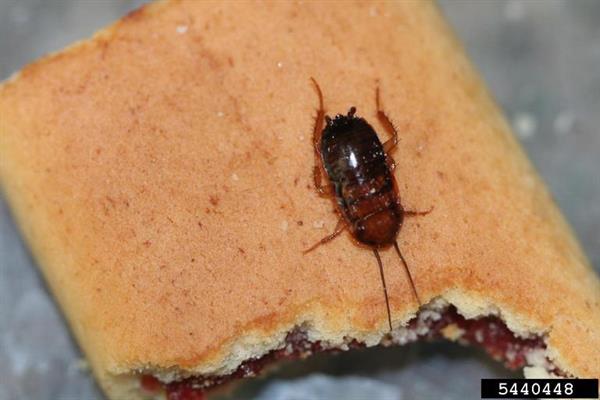
Figure 3. American cockroach nymph feeding on human food.
(Photo: Mohammed El Damir, Bugwood.org).
American cockroaches are essentially outdoor cockroaches. They are well adapted to survive outdoors in warm, wet areas such as under rocks, debris, and mulch. However, they will readily infest and reproduce in indoor environments in humid locations (e.g., Hawaii) In the southwest, their primary habitats are sewer lines, sewage treatment plants and garbage dumps. They are also common in greenhouses. When outside temperatures get cooler, they move indoors seeking warmth and food. They enter homes and similar structures through sewer lines, gaps in doors and window frames, or cracks in floors and foundations. Once indoors, thrive in warm, moist areas such as kitchens, bathrooms, and basements. Therefore, outside of warm and humid environments their presence indoors is indicative of pest entryways into a building and poor sanitation.
Life cycle: American cockroaches are nocturnal. They spend the day hidden in dark, concealed spots, emerging after darkness to feed. These cockroaches do not multiply as fast as German cockroaches, so large infestations are not as common. The females produce dark reddish-brown or black purse-shaped egg cases, each with 15-20 eggs. The cases are carried on the female’s abdomen for 1-2 days and then deposited in or attached to in a warm, concealed spot. Nymphs pass through 10-13 molts before turning into adults (Figure 4). Total life cycle can take from 6 months to 1 ½ years or more depending on availability of favorable conditions.
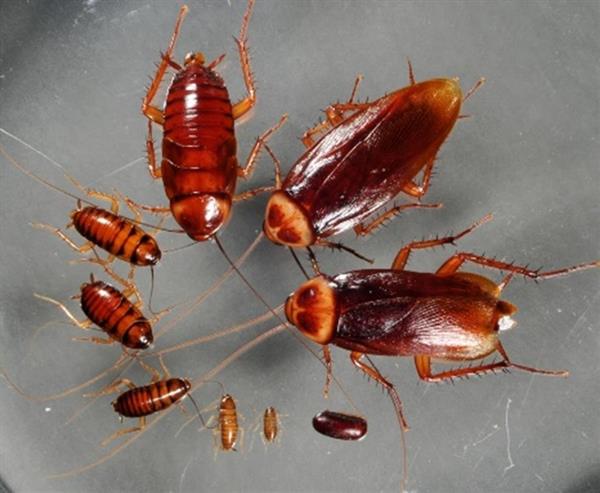
Figure 4. American cockroach life stages. (Photo: John Obermeyer, Purdue University).
Inspection and monitoring
American cockroaches are “thigmotactic”, meaning that they prefer to harbor in locations where they have surface contact on both upper and lower body surfaces. This might explain their liking for flaps of cardboard boxes or spaces between wall-mounted fixtures and the wall (Figure 5). These are key locations for visual observation for cockroaches, egg cases and feces.

Figure 5. American cockroach displaying thigmotactic behavior by squeezing into a narrow space.
(Photo: University of Nebraska Entomology).
When inspecting:

Figure 6. Note the differences between rat (top), mouse (left) and cockroach droppings (right).
(Photo: NY State IPM, Cornell University).
Sticky traps are the number one monitoring tool for American cockroaches (Figure 7). These simple, inexpensive traps can be placed near suspected entry points into a building. Some of these traps can be purchased pre-formed such that the sticky surface is enclosed within a cardboard “tent” to protect the adhesive from dust and debris; others can be set up prior to placement. Residents and staff in buildings must be alerted to their presence so that they do not disturb or remove them when cleaning. Ideally, the traps should be placed on the floor or under-sink cabinet floor, and up against the wall, with the entry/exits to the monitor parallel to the wall. Often, these traps will capture a wide variety of pests including mice and the occasional cricket, scorpion, spider, ground beetle, stored product pest or other invader. These captures on traps can alert those checking the traps to developing problems well before they might otherwise be noted.

Figure 7. American cockroach caught in a sticky trap. (Photo: Gary Alpert).
Physical and mechanical options
Physical removal:
Prevent access to shelter:
Prevent access to water:
Prevent access to food:

Figure 8. Evidence of American cockroach activity under a stove. (Photo: Liz Kasameyer).
Chemical management options
These options are for managing American cockroaches indoors, and can also be used for other indoor cockroaches such as German cockroaches.
Chemical options, including baits, should NOT be used on a routine or calendar-based schedule but only where cockroach presence has been confirmed and non-chemical measures are also implemented and found to be inadequate.
Keep in mind that outdoors, cockroaches provide beneficial ecological services breaking down organic matter that is recycled into the soil.A related species, the brown cockroach (Periplaneta brunnea), also looks very similar to the American cockroach, but is darker in color and has thicker, wider, and darker cerci at the tip of the abdomen (Figure 9).

Figure 9. Adult male brown cockroach. (Photo: Caroline Harding).
It is also an introduced species but is now widely distributed in regions with warm climates throughout the world. Both species occupy similar habitats in the southwest. American cockroaches however, are more frequently associated with sewers, which gives them one of their common names (sewer roaches). Brown cockroaches are often misidentified and may be more widely distributed than is commonly recognized.
Oriental cockroaches are mostly found outdoors in cool, moist areas such as beneath mulch, litter or other organic matter and garbage, and debris that builds up under trailers or gathered around water sources such as outdoor taps or birdbaths. They will come indoors through wall voids, basement boards and crawlspaces, and also through drains and sewer lines. They feed on any kind of organic matter and are highly dependent on water, being unable to survive without water beyond 12-14 days. In the southwest, they occur more in cooler areas or higher elevations. Adult males and nymphs may be confused with American cockroach nymphs but can be distinguished by their uniformly colored pronotum and shorter wings in the adults.
Turkestan cockroaches are a primarily outdoor species, believed to have been introduced to the U.S. from Central Asia. They thrive inside in-ground, enclosed structures such as water-meter, irrigation valve and electrical boxes, raises of concrete and hollow block walls. They feed on debris and decaying vegetation in their habitat, as well as human or pet food in and around homes and buildings. Turkestan cockroaches are considered as an invasive species in many areas of the southwest. Adult males are slender, yellowish-brown in color. They have well developed wings than enable flight and as a result, are more often encountered than females. Adult females are shorter and broader, dark brown to black in color, and wingless. Figure 10 compares adult male American, oriental and Turkestan cockroaches.
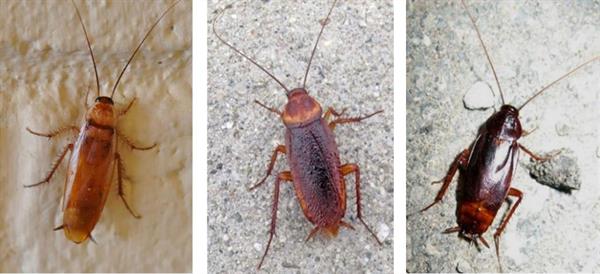
Figure 10. Adult male Turkestan (left), Photo: Dave Beaudette; American (center) and Oriental (right) cockroaches, Photos: Ken Schneider.
Surinam cockroaches are medium sized, dark brown to black burrowing cockroaches about 1 inch in length, found in soil or other organic matter. Most individuals are females and have a shiny black shield-like pronotum and slightly transparent brown wings that do not cover the abdomen completely (Figure 11). Although the wings are functional, they rarely fly. The legs are equipped with strong spines that enable them to burrow in soil. Males, if present, look similar but have longer wings that completely cover the abdomen. Nymphs are shiny, dark brown to black and wingless. They can be occasional pests of plants, especially indoor plants in containers and greenhouses.
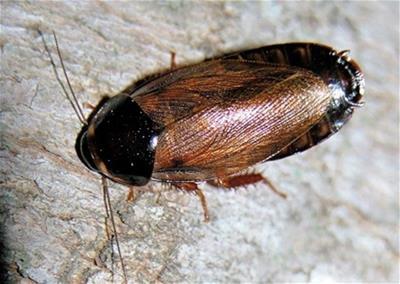
Figure 11. Adult female Surinam cockroach. (Photo: Peter Chew, www.brisbaneinsects.com).
Desert cockroaches are found exclusively in dry, desert-like areas all over the southwest US and their genus name, Arenivaga, literally means “sand wanderer”. Adult males are about ¾ inch in length, tan, or light brown in color, with well-developed wings that are used for flight (Figure 12). Adult females are slightly over ½ inch in length, wingless, and darker in color, with ovoid bodies. Their legs are equipped with spines for digging into the sand. The females burrow into sand, going deeper as the temperatures increase, and coming back to the surface when they get cooler.
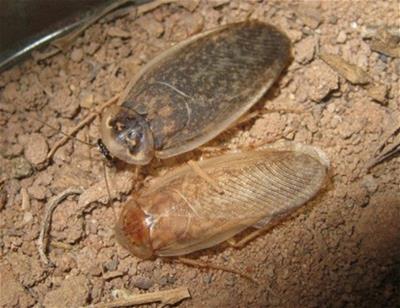
Figure 12. Desert cockroach males of different species. (Photo: Jacob Kalichman).

Answer: This is one of several species of ground beetle that suddenly became abundant in the Phoenix Metro area during July this year. This beetle is one of the Discoderus species. Photo: Salvador Vitanza-Hedman.
Congratulations to Master Pest Detective Violet Wielgus of Arizona State University.
What the Heck IsThis?

Photo: Kevin Lentz
If you know what these are email the answer to Dawn at dhgouge@email.arizona.edu. You will not win anything if you are correct, but you will be listed as a “Master Pest Detective” in the next newsletter issue.
Upcoming Events
What’s Bugging You? First Friday Events (New York State IPM Program)
Fridays | 12:00 pm. – 12:30 p.m. EDT | Zoom | Free; registration required
The first Friday of each month, spend half an hour over lunch learning about practical solutions for pest problems with the New York State IPM Program. Each presentation will end with an IPM Minute.https://nysipm.cornell.edu/whats-bugging-you/first-friday-events/
Upcoming First Friday Events:
Horticultural Research Institute (tHRIVe) web series
Free and open to the public, registration required. Times listed are Eastern Time.
https://www.hriresearch.org/thrive-web-series
UMass Extension’s Green School
October 25, 2022 – December 15, 2022 | 3 hours (plus break) on Tuesday, Wednesday, and Thursday afternoons | $900 early bird, $1,025 regular, scholarships available
https://ag.umass.edu/landscape/education/umass-extensions-green-school
A comprehensive 60-plus-hour-certificate short course that offers fundamental horticultural training in a compact time frame. The program is designed for professional practitioners such as landscapers, lawn care providers, nursery operators, sports field managers, public and private grounds managers, arborists, professional gardeners, landscape and garden designers, and others in the green industries. Both experienced professionals and those aspiring to be will benefit from this course. Registration deadline October 18.
EPA Webinars about Integrated Pest Management
The EPA Center of Integrated Pest Management hosts a webinar series featuring national experts from across the country relaying educational and practical strategies for establishing and improving integrated pest management programs in buildings. We invite you to review the information on the past topics. Register for new or review archived IPM webinars https://www.epa.gov/ipm/previous-webinars-about-integrated-pest-management.
EPA Webinars offering AZ Credits
“Managing Pests of White Pines” October 18th, 2022 (11:00 am – 12:30 pm MST).
Be it eastern or western, white pines are suffering from a plethora of pests including bark beetles, weevils, needle scale, aphids, and needle blight. Utility arborists, park managers, commercial foresters and homeowners need to know how to control these destructive pests. During this webinar, experts will review the pests of white pines, the symptoms of infestation, and provide information on the management strategies and resources needed to maintain their health. Following the main portion of the webinar, there will be a live-Question and Answer session. Register at https://attendee.gotowebinar.com/register/2235928788335327244
“Identifying and Managing Toxic Plants” November 15th, 2022 12:00 – 1:30 PM MST. Learn about some dangerous, toxic plants scattered through forests, fields and even sneaking into your landscaped areas. These plants can be extremely toxic to the touch-with sap that cause burns and blindness to humans and dogs and can cause respiratory failure in other mammals if ingested. Learn how to identify these plants, their range, and how to remove and control them. Discover how these Invasive plants are controlled in a larger scale such as rangelands, and field crops. Register at https://attendee.gotowebinar.com/register/8598303399863960847
View recordings of previous EPA Integrated Pest Management Webinars at https://www.epa.gov/managing-pests-schools/upcoming-integrated-pest-management-webinars.
For more information about the EPA Schools program: http://www.epa.gov/schools/.
To view all our previous newsletters, visit: https://acis.cals.arizona.edu/community-ipm/home-and-school-ipm-newsletters.
Designed for professionals with less than five years’ experience in pest management, the Certified IPM Technician (CIT) credential demonstrates a foundational skillset and commitment to the IPM principles and practices. Applications for the credential are now being accepted by the ESA Certification.
ESA also offers several other certification programs for professionals:
This material is in part funded by the National Institute of Food and Agriculture, U.S. Department of Agriculture, under award number 2021-70006-35385 that provides Extension IPM funding to the University of Arizona. It is funded in part by the USDA National Institute of Food and Agriculture through the Western Integrated Pest Management Center, grant number 2018-70006-28881. Additional support is provided by the UA Arizona Pest Management Center and Department of Entomology. Any opinions, findings, conclusions, or recommendations expressed in this publication are those of the authors and do not necessarily reflect the views of the U.S. Department of Agriculture or those of other funders.